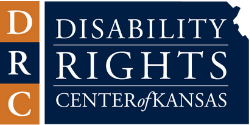Having someone help you cast a ballot
Getting Assistance in Casting a Ballot & Your Right to Vote
Voting is a fundamental right!
That means everyone who is registered to vote is entitled to vote. Voters with disabilities are entitled to receive any assistance needed in casting their ballots.
Facts about the right of people with disabilities to get assistance in voting:
• Federal law gives voters with disabilities the right to decide whether to get assistance in casting a ballot and who will provide it.
• Voters can choose a poll worker, friend, family member, caregiver, assisted living provider, facility staff person or almost anyone else.
• The only people who may not assist a voter are the voter's employer or an agent of that employer, or, if the voter is a member of a union, the voter’s union officer or an agent of the union.
What can assistance providers do to help a person vote?
• First, an assistance provider should ask the voter what choice he or she wants to make. The assistance provider must never make assumptions regarding how a person wants to vote!
• The assistance provider must respect the voter’s privacy at all times during the voting process.
• The assistance provider should be familiar with the instructions on how to cast a ballot and be prepared to explain them to the voter and/or demonstrate the voting process.
• The assistance provider should be prepared to read or explain all ballot choices or questions.
• The assistance provider may mark a ballot for an individual with a disability only if the voter has directed him or her to do so.
• After the ballot has been completed, the assistance provider should make sure that the ballot accurately reflects the voter’s choices. The assistance provider should offer to correct any mistakes and to check the ballot for additional election contests that may have been missed.
What actions would not be appropriate?
• Making decisions for the voter — for example, marking or changing a ballot to reflect a choice other than a choice expressed by the voter.
• Communicating with the voter in a way that makes the voter feel forced to make certain choices.
• Pressuring the voter to vote for a particular candidate or in a certain way.
• Withholding information or giving false information to a voter.
• Pressuring the voter to cast a vote on every measure or candidate. Everyone has the right to choose whether or not to vote on each contest.
• Revealing to others how the individual voted. Please respect the voter’s right to privacy!
If you have any questions or need assistance please contact DRC.
If you have a problem on election day, call the Election Protection hotline at 1-866-OUR-VOTE (1-866-687-8683), or call DRC Kansas at 877-776-1541
KSDISABILITYVOTE.ORG is a project of DRC Kansas to help you get registered to vote and understand your rights! The cost of ksdisabilityvote.org was paid for by a grant from the Administration on Developmental Disabilities (grant # G0703KSVOTP)
.png)






